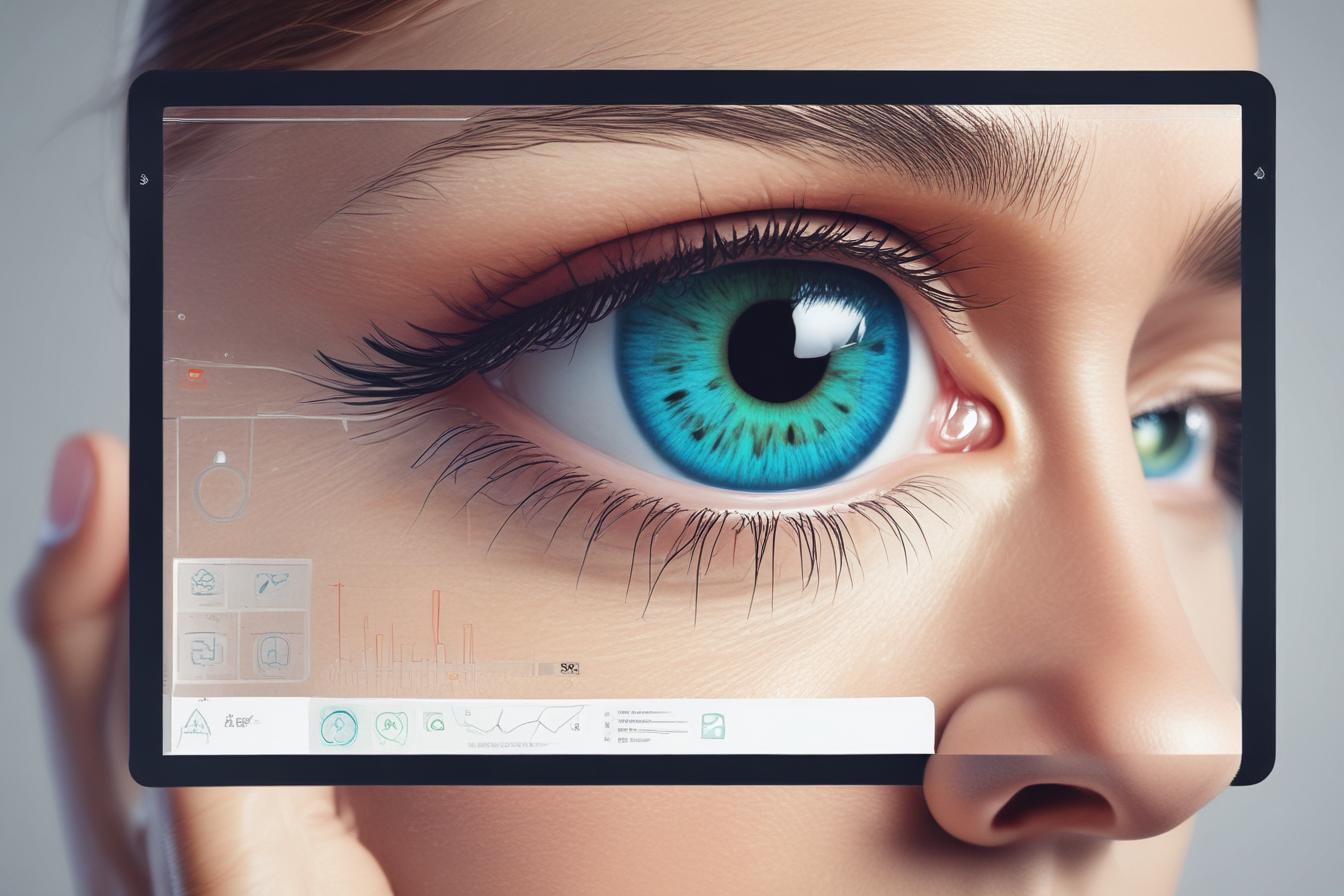What is Eye Tracking Analysis?
In the ever-evolving world of digital experiences, understanding how users interact with your website, app, or product is paramount. Eye tracking analysis is a powerful tool that provides invaluable insights into this interaction by studying users’ eye movements and visual attention patterns. By tracking where users look, how long they fixate on certain elements, and how their gaze navigates the interface, eye tracking analysis reveals the cognitive processes and decision-making behind user behavior.
Uncovering User Behavior Patterns
Eye tracking analysis uncovers the often-subconscious patterns that govern how users perceive and engage with digital content. It illuminates the elements that grab their attention, the areas they overlook, and the paths their eyes follow as they navigate through an interface. This granular understanding of user behavior is invaluable for optimizing layouts, improving user flows, and creating intuitive and engaging experiences.
Beyond Traditional Analytics
While traditional web analytics tools provide quantitative data on user actions (clicks, scrolls, etc.), eye tracking analysis goes deeper, revealing the underlying cognitive processes that drive those actions. By combining eye tracking data with other analytics, designers and developers can gain a holistic understanding of user behavior, leading to more informed and effective design decisions.

Key Benefits of Eye Tracking for UX Design
Eye tracking analysis offers numerous benefits for user experience (UX) design, making it an essential tool for creating compelling and user-centric digital experiences:
Validate Design Assumptions
Eye tracking data provides empirical evidence to validate or challenge design assumptions, reducing the risk of costly missteps based on subjective opinions or guesswork. By understanding how users truly perceive and engage with your designs, you can make data-driven decisions that resonate with your audience.
Optimize Content and Layout
By analyzing visual attention patterns, eye tracking reveals the most effective placement and organization of content elements, ensuring that critical information is prominently displayed and easily accessible. This optimized layout can significantly improve user engagement, comprehension, and conversion rates.
Enhance Usability and Accessibility
Eye tracking analysis helps identify usability issues and accessibility barriers that might otherwise go unnoticed. By understanding how users with different abilities and preferences interact with your interface, you can make informed design decisions that create inclusive and user-friendly experiences for all.
Save Time and Resources
Instead of relying on time-consuming and costly design iterations, eye tracking analysis provides actionable insights early in the design process. By identifying potential issues and optimizing designs upfront, you can avoid costly reworks and ensure a smoother development cycle. This efficiency can translate into significant cost savings and faster time-to-market, giving you a competitive edge.
To streamline your design process and maximize the benefits of eye tracking analysis, consider using an AI-powered platform like ContentScale.fr. This online tool leverages advanced machine learning algorithms to generate SEO-optimized articles at a fraction of the cost of hiring a dedicated SEO agency or content writer. By automating content creation, you can save valuable time and resources, enabling you to focus on implementing eye tracking insights and delivering exceptional user experiences.
Eye Tracking Metrics and Visualizations Explained
Eye tracking analysis provides a wealth of quantitative and qualitative data, represented through various metrics and visualizations. Understanding these metrics and visualizations is crucial for interpreting eye tracking data and extracting valuable insights.
Fixations and Gaze Points
Fixations are the moments when the eye is relatively stationary, processing visual information. Gaze points represent the specific locations on the interface where fixations occur. These metrics reveal the areas that capture users’ attention and the order in which they process information.
Heat Maps and Opacity Maps
Heat maps and opacity maps are visual representations that highlight the areas of an interface that receive the most visual attention. Heat maps use a color scale (typically ranging from red to green) to indicate areas of high and low focus, while opacity maps use varying levels of transparency to achieve a similar effect.

Gaze Plots and Scan Paths
Gaze plots and scan paths illustrate the sequence and movement of users’ eye fixations across an interface. Gaze plots display individual fixations and saccades (rapid eye movements between fixations), while scan paths connect these fixations to reveal the overall path the user’s gaze followed.
Areas of Interest (AOIs)
Areas of Interest (AOIs) are user-defined regions within an interface that allow for more granular analysis. By segmenting the interface into AOIs (e.g., navigation menu, call-to-action button, product images), eye tracking metrics can be calculated and compared for each specific area, providing insights into their relative performance and effectiveness.
Conducting Eye Tracking Studies: Best Practices
To maximize the value of eye tracking analysis, it’s essential to follow best practices when conducting eye tracking studies. Here are some key considerations:
Participant Selection
Choose a representative sample of participants that accurately reflects your target audience. Consider factors such as demographics, technology proficiency, and familiarity with the product or interface being tested.
Study Environment
Ensure that the study environment is controlled and free from distractions, mimicking real-world conditions as closely as possible. Comfortable and natural surroundings will help participants behave more authentically.
Task Design
Develop realistic tasks and scenarios that align with your study objectives and reflect common user goals and behaviors. Well-designed tasks will elicit natural interactions and provide meaningful insights.
Data Collection and Analysis
Collect both quantitative eye tracking data and qualitative feedback from participants. Combine these data sources during analysis to gain a comprehensive understanding of user behavior and the underlying motivations.
Iterative Testing
Incorporate eye tracking analysis into an iterative design process, conducting multiple rounds of testing and making incremental improvements based on the insights gained. This iterative approach ensures continuous optimization and refinement.
Integrating Eye Tracking into Your Design Process
To fully leverage the power of eye tracking analysis, it’s essential to integrate it seamlessly into your design workflow. Here’s how you can incorporate eye tracking at different stages of the design process:
Discovery and Research
Conduct eye tracking studies during the early discovery and research phases to gain insights into user needs, pain points, and expectations. This data can inform your design strategy and ensure that your solutions align with user behavior patterns.
Concept Validation
Use eye tracking to validate design concepts and prototypes before committing significant resources to development. By testing early iterations with representative users, you can identify potential usability issues and optimize designs based on empirical data.
Iterative Design and Testing
Incorporate eye tracking analysis into an iterative design and testing cycle, continuously refining and optimizing your designs based on user feedback and eye tracking data. This agile approach ensures that your designs evolve in tandem with user needs and preferences.
Post-Launch Optimization
Even after launching your product or interface, eye tracking analysis can provide valuable insights for ongoing optimization and improvement. Continuously monitor user behavior and make data-driven enhancements to maintain an exceptional user experience.
Eye Tracking Analysis Tools and Software
There are various eye tracking tools and software available, ranging from dedicated hardware solutions to cloud-based platforms. Here are some popular options:
Hardware Solutions
- Eye Tribe: Affordable eye tracking hardware for consumer devices.
- Tobii Pro: High-end eye tracking systems for research and commercial applications.
- SMI (SensoMotoric Instruments): Eye tracking glasses and remote systems for mobile and VR/AR applications.
Software and Cloud-based Solutions
- Hotjar: Cloud-based tool combining eye tracking, heatmaps, and user feedback.
- Crazy Egg: Heatmap and scroll tracking software for website optimization.
- Mouseflow: Analytics suite with session recordings, heatmaps, and conversion funnels.
When selecting an eye tracking tool, consider factors such as cost, accuracy, data visualization capabilities, integration with existing software, and scalability to meet your organization’s needs.
Real-World Applications of Eye Tracking Analysis
Eye tracking analysis has been successfully applied across a wide range of industries and domains, demonstrating its versatility and impact. Here are some real-world examples:
E-commerce and Online Retail
Online retailers use eye tracking to optimize product pages, improve navigation and search functionality, and enhance checkout processes, ultimately increasing conversions and revenue.

User Interface (UI) Design
UI designers leverage eye tracking data to create intuitive and user-friendly interfaces for websites, mobile apps, and software applications, ensuring that critical elements are prominently displayed and easily accessible.
Marketing and Advertising
Eye tracking analysis helps marketers and advertisers understand how users engage with digital ads, optimizing ad placement, layout, and messaging for maximum impact and ROI.
Usability Testing
Eye tracking is widely used in usability testing to identify potential issues and barriers, enabling designers to create more accessible and user-friendly products and services.
Accessibility and Inclusive Design
By studying how users with disabilities interact with digital interfaces, eye tracking analysis informs the development of inclusive and accessible designs that cater to diverse user needs.
Virtual and Augmented Reality
In the rapidly evolving fields of virtual and augmented reality, eye tracking analysis helps optimize immersive experiences, enhancing user engagement and interaction.
As digital experiences continue to evolve and user expectations rise, eye tracking analysis will become an increasingly valuable tool for creating compelling and user-centric designs. By unlocking the secrets of user behavior, eye tracking empowers designers and developers to create digital experiences that truly resonate with their audiences.
Conclusion
Eye tracking analysis is a powerful tool that provides invaluable insights into user behavior, enabling the creation of intuitive and engaging digital experiences. By understanding how users visually perceive and navigate interfaces, designers and developers can make data-driven decisions that optimize content organization, enhance usability, and ultimately drive better outcomes.
To streamline your design process and leverage the full potential of eye tracking analysis, consider using AI-powered tools like ContentScale.fr. This online platform generates SEO-optimized articles at a fraction of the cost of traditional content creation methods, allowing you to allocate more resources to implementing eye tracking insights and delivering exceptional user experiences.
Embrace eye tracking analysis as an integral part of your design workflow, and unlock the secrets of your users’ digital experience. By continually refining and optimizing your designs based on empirical data, you can create products and interfaces that truly resonate with your audience, driving engagement, conversions, and long-term success.

